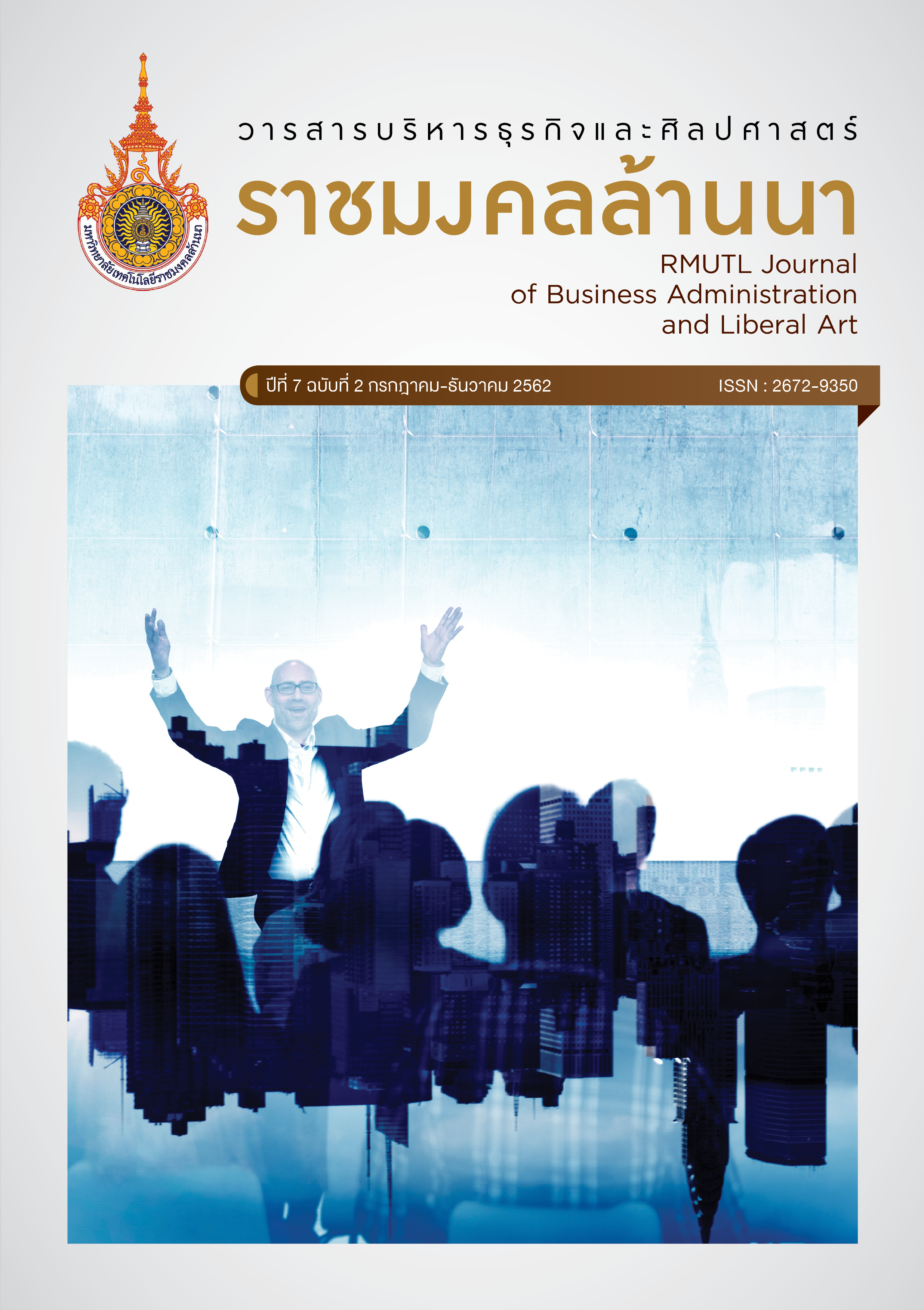Attitudes and Social Acceptance towards Tattooing: A Case Study of Women with Tattoos in Hua Hin District, Prachuap Khiri Khan Province
Main Article Content
Abstract
The research aimed to study the construction of meanings and identities of women through their tattoo images, to analyse social factors in Thai society which influenced on attitude change towards tattooing and to investigate the negative views on tattooed women and conflict resolution to solve the problems. Qualitative research was employed to the study using collected documents and in-depth interview with 10 women with tattoos and 5 tattoo artists residing in Hua Hin District, Prachuap Khiri Khan Province for over 10 years.
The results of the study revealed that women began getting tattooed to express their personality and passions. They attempted to represent the meanings of tattoo designs with their identities. But Tattooing was inconsistent with social values. Women with tattoos would be considered low class although there were some positive changes of social factors. Even being considered as aesthetics, arts and fashion, a general acceptance of tattoos in Thai society was still stagnated. Therefore, Women who decided to get tattooed would be considered challenging or resisting to prevailing practices and self-liberated from social norms and they would become socially marginalized. Contrarily, tattoos could be used to inform the capability to control one’s own body and reclaim the creation of self rather than being socially constructed. Women with tattoos were faced with value conflicts at the ultimate level and they often managed the conflicts by using competing strategy. They struggled for authenticity in several ways. Even though they were not able to change the society, they could somehow make the society realize the individuality and self-expression and challenged the social power for freedom and rights to self-identification.
Article Details
บทความวิจัยนี้เป็นของลิขสิทธิ์
References
ก้องสกล กวินรวีกุล. (2545). การสร้างร่างกายพลเมืองไทยในสมัยจอมพลป. พิบูลสงคราม พ.ศ. 2481-2487(วิทยานิพนธ์สังคมวิทยาและมานุษยวิทยามหาบัณฑิต). กรุงเทพมหานคร: มหาวิทยาลัยธรรมศาสตร์.
จุฬารัตผดุงชีวิต. (2558). การสลักเรือนร่าง (Crafting Bodies) ฟูโกต์กับสังคมวิทยาร่างกาย. ในอนุสรณ์อุณโณ, จันทนีเจริญศรีและสลิสายุกตะนันทน์(บรรณาธิการ). อ่านวิพากษ์มิเชลฟูโกต์. กรุงเทพมหานคร: สยามปริทัศน์.
ฉันทนา บรรพศิริโชติ หวันแก้ว. (2550). ความเข้าใจเบิ้องต้นเกี่ยวกับสันติวิธีและธรรมชาติของความขัดแย้งในสังคมไทย. พิมพ์ครั้งที่ 2. นนทบุรี: สถาบันพระปกเกล้า.
ชนิตร ภู่การญจน์. (2539). ตํานานแห่งรอยสักศิลปะบนเรือนร่างของมนุษย์. ศิลปวัฒนธรรม, 18(2), 168-170.
ธนาคารแห่งประเทศไทย. (2561). รายงานภาวะเศรษฐกิจไทยรายปี. สืบค้น 19 กันยายน 2561, จาก https://www.bot.or.th/Thai/MonetaryPolicy/EconomicConditions/AnnualReport/Pages/default.aspx.
นิติ ภวัครพันธุ์. (2541). รอยสักกับการสร้าง “ตัวตน”. ในปริตรตาเฉลิมเผ่าก่ออนันตกูล (บรรณาธิการ). เผยร่างพรางกาย: ทดลองมองร่างกายในศาสนาปรัชญาการเมืองประวัติศาสตร์ศิลปะและมานุษยวิทยา. กรุงเทพมหานคร: โครงการจัดพิมพ์คบไฟ.
ภัทรพล ภูริดํารงค์กุล. (2553). ผู้หญิงกับการสักยันต์: กระแสแฟชั่นหรือการพยายามสร้างอัตลักษณ์?(วิทยานิพนธ์ศิลปศาสตรมหาบัณฑิตสาขามานุษยวิทยา). กรุงเทพมหานคร: มหาวิทยาลัยศิลปากร.
รัฐกานต์ กัณพิพัฒน์. (2557). พฤติกรรมการเลียนแบบกับค่านิยมการสักของวัยรุ่นหญิงในเขตกรุงเทพมหานคร. วารสารวิทยบริหารมหาวิทยาลัยสงขลานครินทร์, 25(3), 39-47.
รัตนา อรุณศรี. (2547). ประวัติศาสตร์สังคมสังเขปเรื่องการสักร่างกายมองในมิติของความสัมพันธ์ทางเพศสภาพ. กรุงเทพมหานคร: มหาวิทยาลัยธรรมศาสตร์.
อนุสรณ์ อุณโณ, จันทนี เจริญศรี และสลิสา ยุกตะนันทน์. (2558). อ่านวิพากษ์มิเชลฟูโกต์. กรุงเทพมหานคร: สยามปริทัศน์.
อภิญญา เฟื่องสกุล. (2543). อัตลักษณ์ (Identity): การทบทวนทฤษฎีและกรอบแนวคิด. กรุงเทพมหานคร: สํานักงานคณะกรรมการสภาวิจัยแห่งชาติ.
Fish, Jefferson M. (2014). Tolerance, Acceptance, Understanding. Retrieved 11 December 2018, from https://www.psychologytoday.com.
Moore, Christopher W. (1996). The Mediation Process: Practical Strategies for Resolving Conflict. New York: John Wiley & Sons Inc.
Rapp, Elizabeth M. (2010). Stigmatization or Decoration Tattoo as Deviance, A Cross-Cultural Study. Oregon: Willamette University.
Thomas, Kenneth W. and Kilmann, Ralph H. (1987). Thomas-Kilmann Conflict Mode Interest. New York: X/COM Incoporated.

